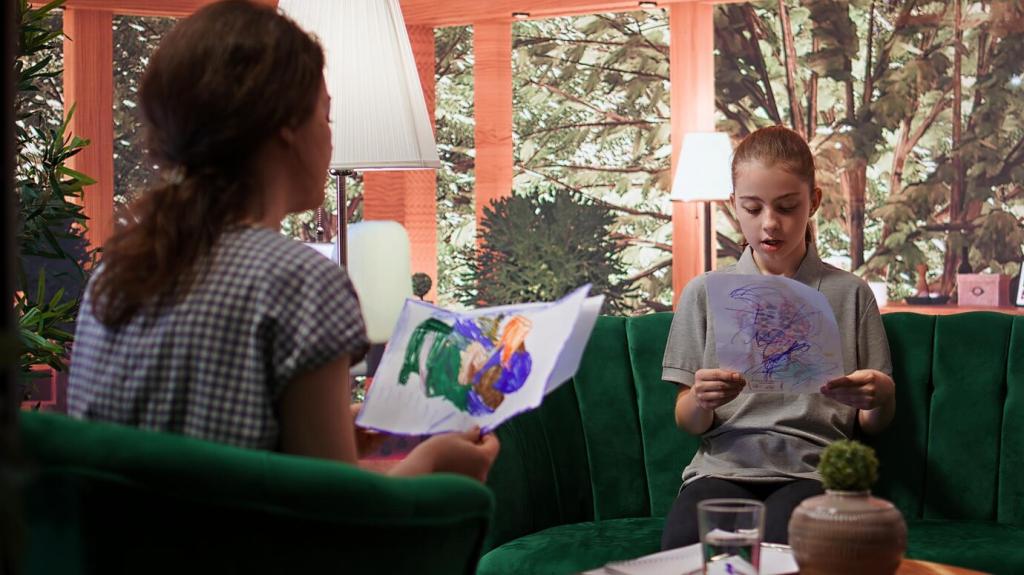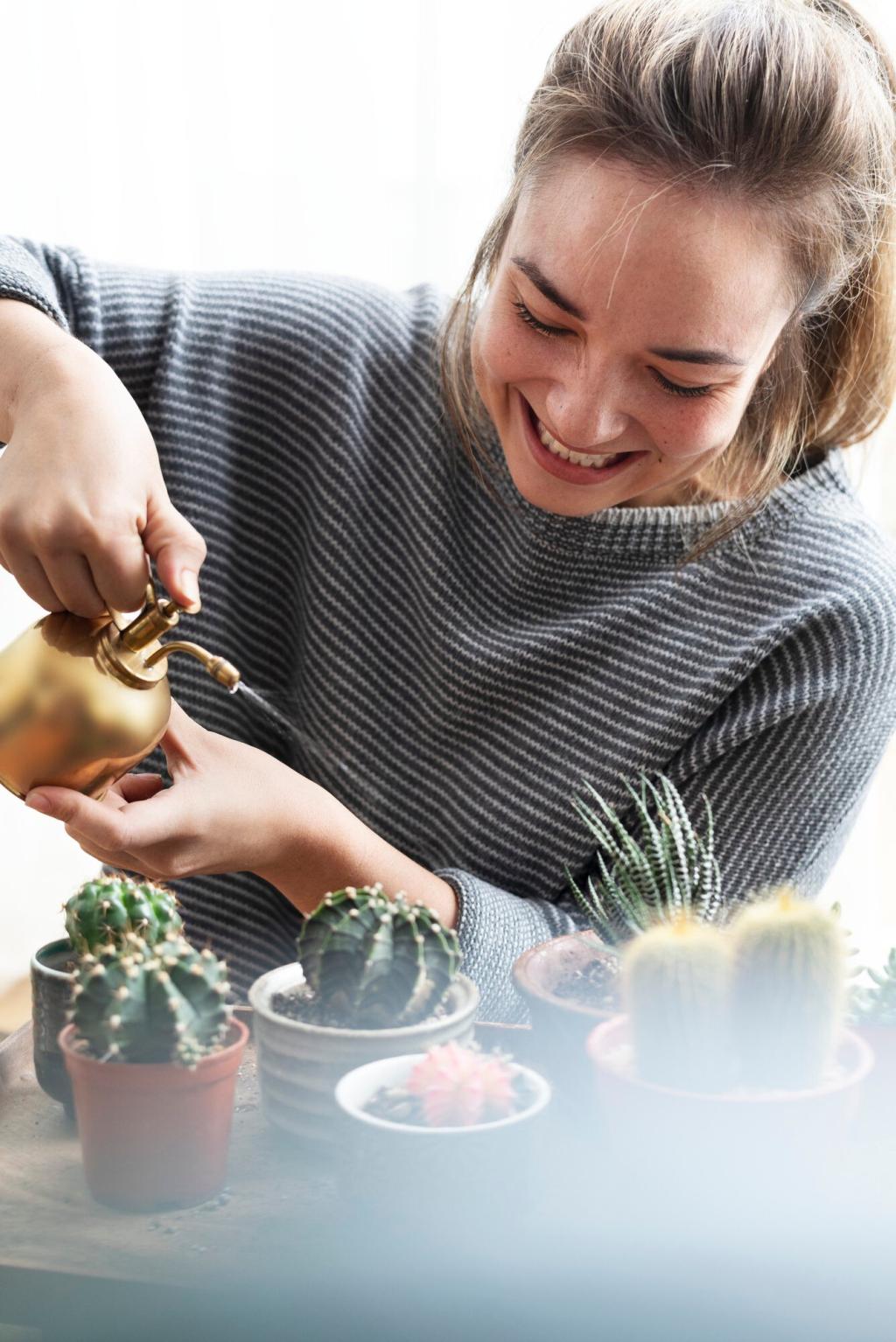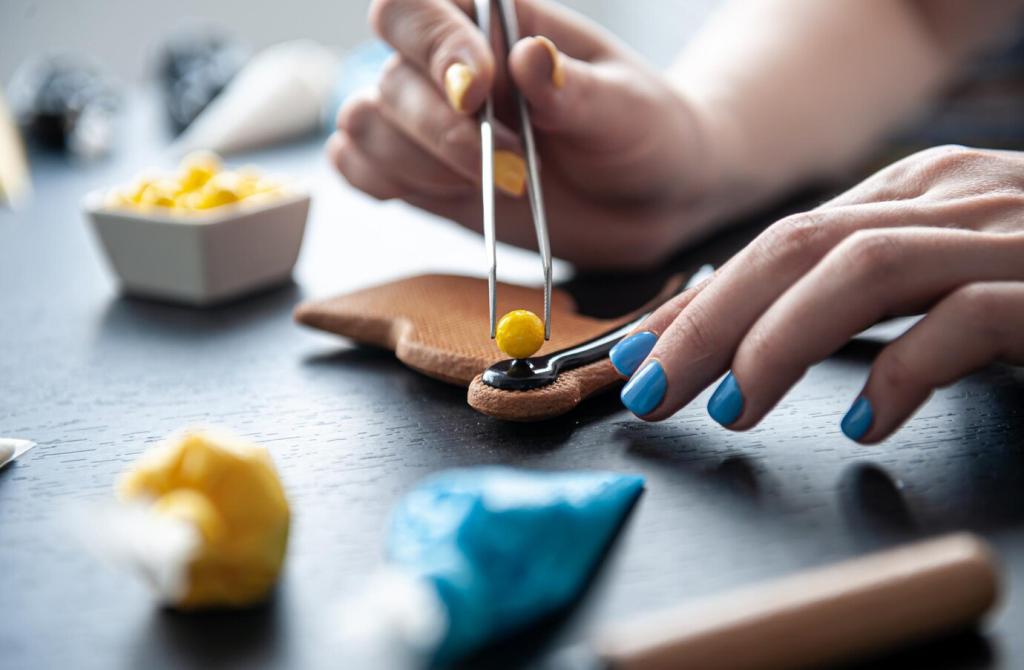
Draw Your Calm: Painting Exercises for Stress Relief
Chosen theme: Drawing and Painting Exercises for Stress Management. Step into a gentler rhythm where simple lines and soft washes invite your nervous system to exhale. Stay with us, subscribe for weekly prompts, and share your sketches so others can breathe easier too.
Why Art Lowers Stress
Cortisol, Color, and Calm
Brief, intention-filled art sessions can decrease cortisol and nudge your body toward a parasympathetic state. Even limited materials work. Colors act like gentle signals, helping your breath slow as your attention settles on brush, pigment, and paper.
Flow State in Simple Lines
Repetitive strokes encourage flow, that satisfying focus where time softens and worries fade. When you trace contours slowly, your brain anchors to sensation, granting your mind a pocket of quiet that supports emotional regulation and steadier decisions.
Non-Artists Welcome
You do not need skill to receive benefits. The nervous system responds to process, not perfection. Wobbly circles, smudges, and playful marks still foster calm. Let curiosity, not mastery, guide you through each exercise with kindness and permission.
Set Up a Restorative Art Corner
Keep a travel watercolor set, a pencil, a waterproof pen, and a small sketchbook in one basket. Reduce decision fatigue by limiting choices. When stress rises, reach for this kit without thinking, and start with the simplest familiar exercise.
Set Up a Restorative Art Corner
Soft, indirect light eases squinting and tension. Play instrumental music or nature sounds to mask distractions. If scents soothe you, try a subtle citrus or lavender nearby. Create a sensory envelope that invites your shoulders to drop and unclench.

Guided Drawing and Painting Exercises
Three-Minute Monochrome Wash
Choose one color and make a gradient from deep to pale, breathing slower as the pigment lightens. Notice water spreading and edges softening. Let your wrists relax, allowing gravity to help. Three minutes can interrupt spirals and restore steadier focus.
Gratitude Mandala
Begin with a tiny dot and grow outward in rings of repeating shapes, naming a quiet gratitude with each circle. The symmetry reassures your brain, while mindful repetition steadies thoughts and gently replaces urgency with warmth and grounded presence.
Emotion-to-Color Scale
List three feelings, then paint a small swatch for each using hue, saturation, and pressure to match intensity. Externalizing emotion into color reduces rumination. Label the swatches, breathe, and observe how naming and painting transform agitation into clarity.
Maya, the Night-Shift Nurse
Between alarms, Maya filled a pocket notebook with one-minute ink waves. The repeating curves matched her breath, and during the toughest codes she remembered that rhythm. She says the lines taught her hands to unclench when adrenaline surged unexpectedly.
Leo’s Exam-Week Lines
Leo drew slow contour studies of his headphones each evening, never lifting the pen. The unbroken line became a promise to stay. By Friday, his sleep returned, and the test felt like another contour to follow, not a cliff.
Ana’s Kitchen-Table Watercolors
After bedtime chaos, Ana painted tiny color tiles beside the kettle. Five squares, five breaths, five minutes. Over a month, her mood journal showed fewer spikes. She now invites readers to share five-tile palettes and swap soothing color recipes together.
Mindfulness Meets Mark-Making
Inhale four counts while loading the brush, hold four, exhale four as you paint a line, hold four. Repeat to form a square. Matching breath to movement anchors presence, helping your body learn a reliable path back from overwhelm.
Weekly Practice Plan and Community
Commit to five minutes daily: day one monochrome wash, day two gratitude mandala, day three contour object, and repeat variations. Track mood before and after. Subscribe for downloadable prompts, and tag your posts so our community can celebrate your progress.

Troubleshooting Stressful Moments
When Perfectionism Pounces
Set a timer for two minutes and make intentionally imperfect marks: crooked lines, splatters, uneven washes. Remind yourself the goal is nervous system relief. Post your gloriously messy page to encourage others and reinforce permission to simply begin.
No Time? Try Tiny Sessions
Pair drawing with existing routines: kettle boils, timer runs, bus arrives. One square inch of paper, one pen, one shape repeated. Small bursts still regulate stress. Subscribe for pocket exercises you can finish before a notification even vibrates.
Mid-Paint Panic Pause
If anxiety spikes while painting, stop and switch to finger smudging with dry graphite. Feel texture, notice temperature, count five breaths. Then either resume gently or close the book with gratitude. Share what helped so others can borrow your tactic.
